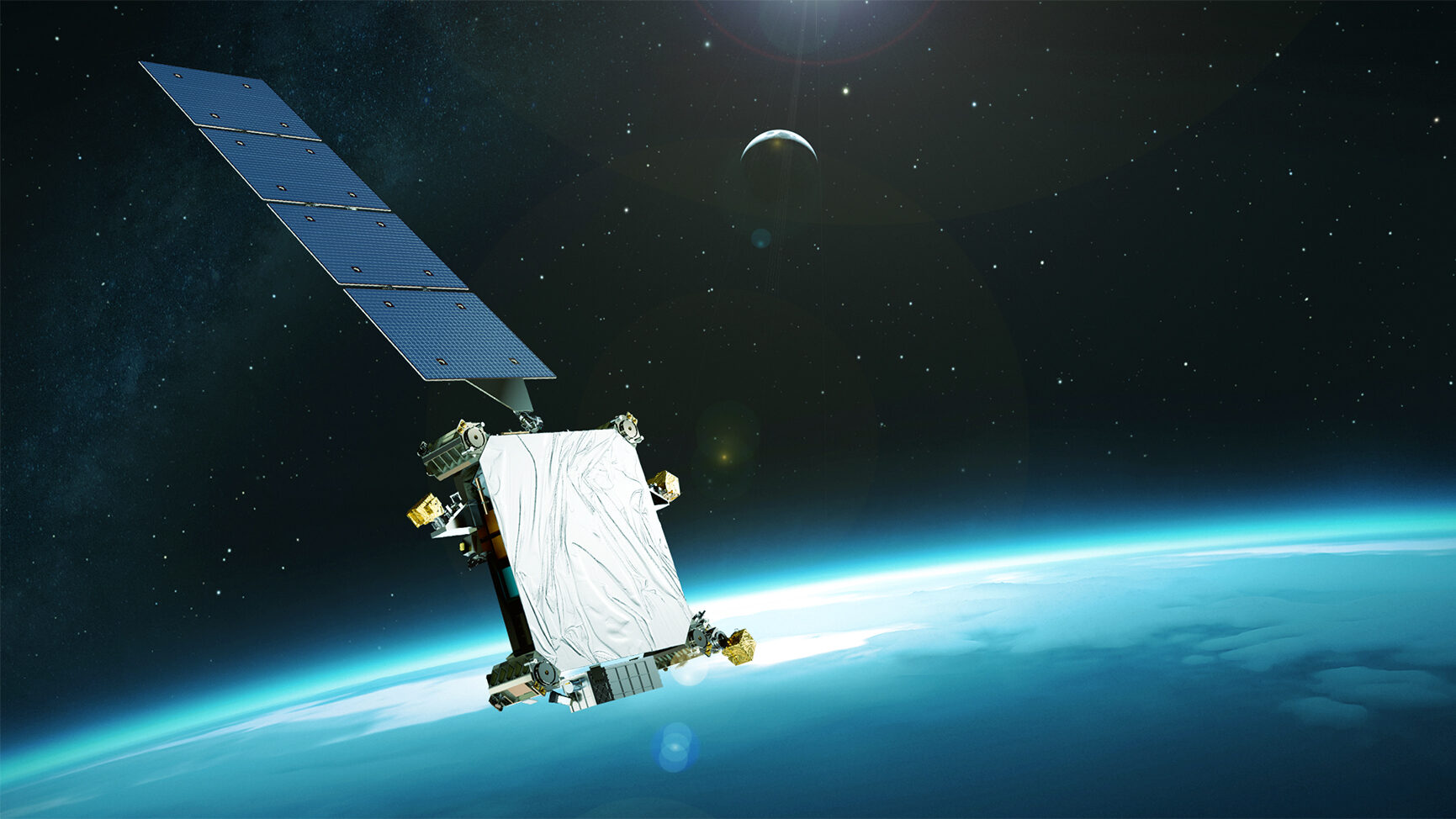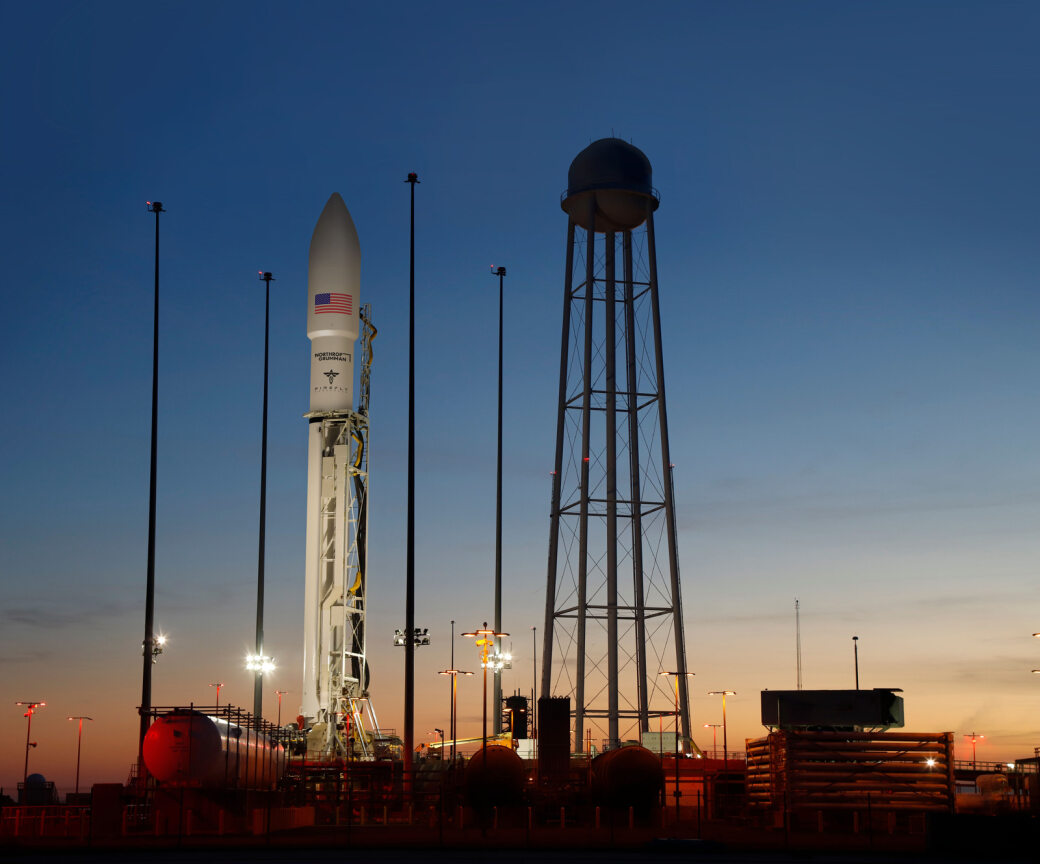
A Sierra Space graphic of one of its satellites in orbit.(Sierra Space)
WASHINGTON — Sierra Space has tapped GEOST to provide sensor payloads for both missile tracking and “fire control” for its 18 satellites currently under development for the Space Development Agency — in a first for the Tucson-based startup.
While GEOST, a LightRidge Solutions company funded by private equity, has made infrared sensors for classified systems in the ones and twos, the new contract will involve building infrared sensors designed to be used in a larger constellation, LightRidge CEO Bill Gattle told Breaking Defense in an interview on Tuesday. The company also was contracted in September to provide Northrop Grumman with “directed energy sensors” designed to identify ground-based sources of interference for the defense behemoth’s satellites
“This is a new set of payloads for us. It does leverage a lot of our experience and things we built in the past, especially in the infrared area. That’s one of the reasons why we could legitimately get this contract because we have some background in doing this,” he said.
Gattle noted that while the GEOST was selected last month, the company only “a few days ago” signed the contract with Sierra Space. He did not, however, reveal the contract’s value.
According to GEOST’s Feb. 4 press release, the company will provide Sierra Space with 16 Mercury missile warning/tracking payloads and Phoenix fire control payloads, as well as mission processing software. The payloads will be integrated with the satellites Sierra Space is building for SDA’s Tranche 2 Tracking Layer constellation, expected to be launched by April 2027.
SDA announced on Jan. 16 that it had awarded three firms Tranche 2 Tracking Layer contracts for 18 birds each: L3Harris, with an award worth up to $919 million; Lockheed Martin, up to $890; and Sierra Space, up to $740 million. Tranche 2 somewhat confusingly will be the third iteration of missile warning/tracking satellites to be launched as part of the agency’s Tracking Layer, which eventually will comprise just over 100 satellites in low Earth orbit to keep tabs on both ballistic missiles and harder to see hypersonic missiles.
Gattle explained that the Mercury sensors are wide-field-of-view infrared cameras, which can look at a large area of space. “All they’re doing is basically identifying that there’s an object, a missile or a threat, in that frame and in that picture,” he said.
The Phoenix sensors, by contrast, provide a closer look and can “actually target the object to a countermeasure against it,” Gattle said. “It’s accurate enough and tracking enough that you can actually see that object and create what they call a firing solution against it.”
He noted that according to the “feedback” GEOST received following its selection, while its “wide-field-of-view [solution] is very similar to others people’s wide-field-of-view, the piece that made us unique and the reason why I believe this was an award they wanted to give us is because we came up with a very innovative solution for fire control that allowed them to do it at a price point they probably hadn’t seen before.”
Rusty Thomas, chief technology officer at Sierra Space, echoed Gattle’s sentiments. “With GEOST, we harness cutting-edge optical sensor technology to bolster our nation’s defense capabilities,” he said, noting that “one factor for choosing GEOST was the firm’s “proven track record of developing high-performance, cost-effective solutions.”
GEOST markets itself as providing low size, weight and power optical sensors at very low costs. Gattle said that one of the keys to doing that is building “higher density focal planes” that allow cameras to take higher accuracy pictures and focus under very dim and/or very bright light conditions. Another factor, he added, is the computer algorithms GEOST has developed to “clean up” images after they are taken.
Beyond SDA’s programs, Gattle said LightRidge and GEOST also hope to participate in the Space Force’s other new missile tracking program, called Resilient Missile Warning/Missile Tracking, that aims to put a constellation of 27 satellites in medium Earth orbit by 2030.
Further, he said, the company hopes to continue working with the Space Force as it progresses on plans to develop new electro-optical (i.e., visible light) sensors that could be carried as “hosted payloads” on other military, commercial or allied satellites higher up in geosynchronous Earth orbit to monitor the activity of adversary satellites.












